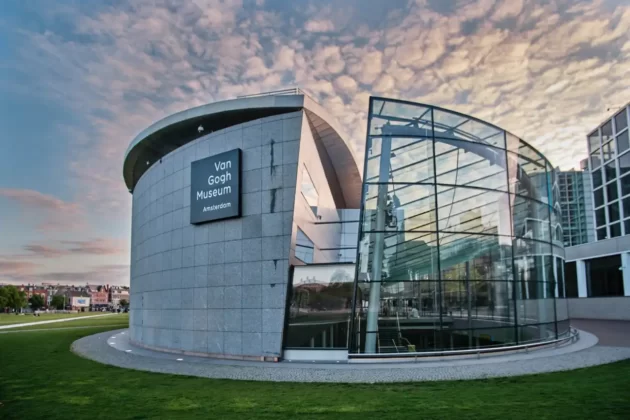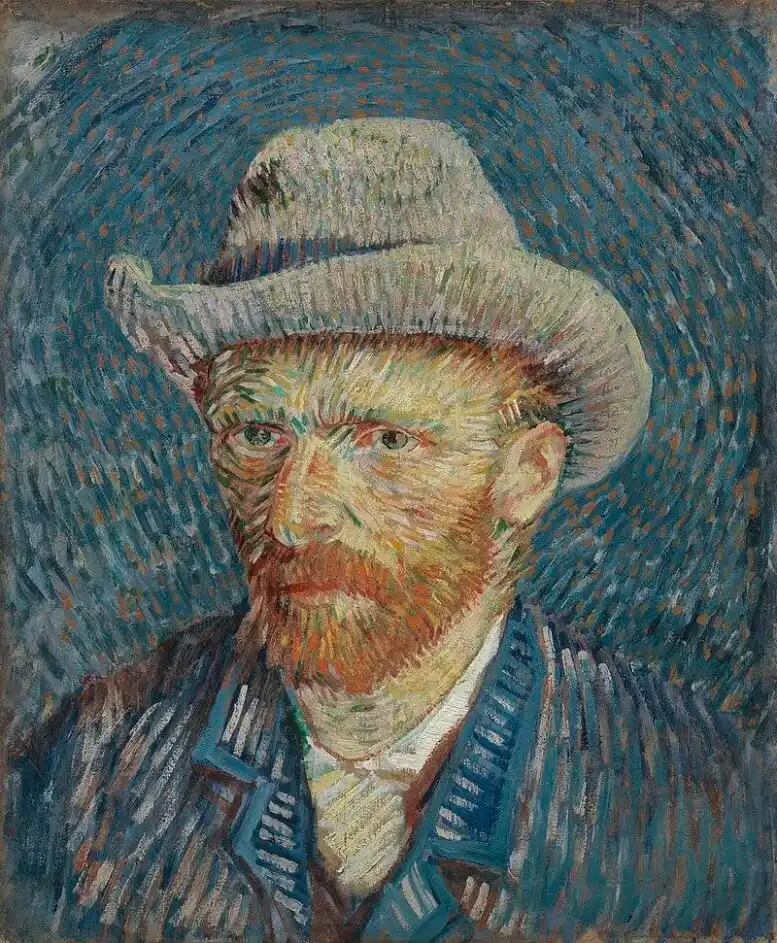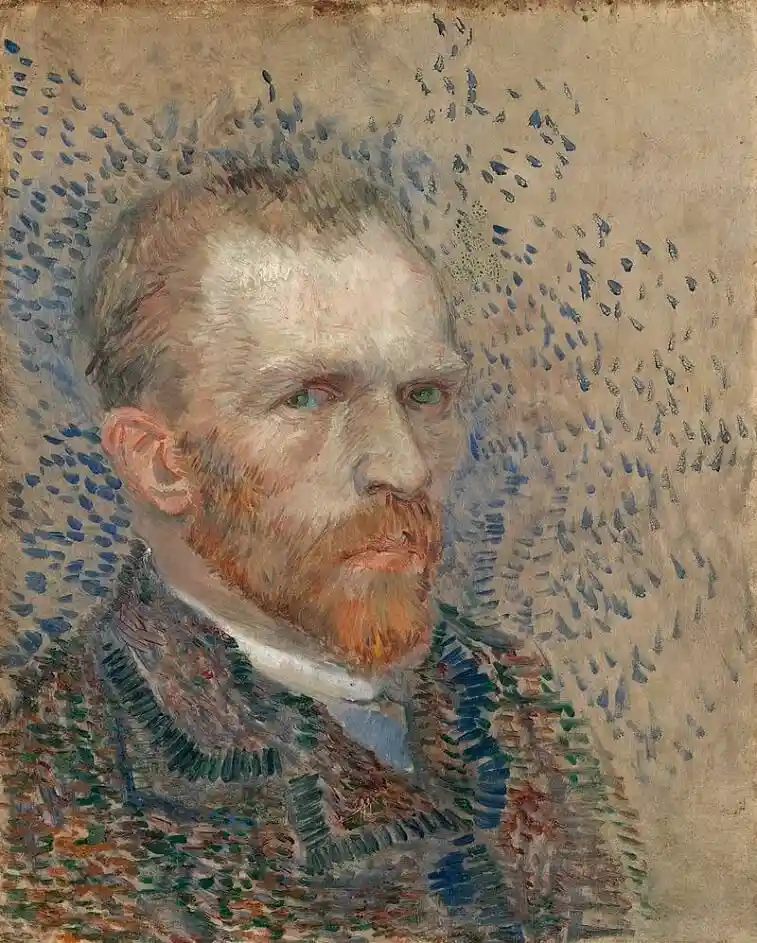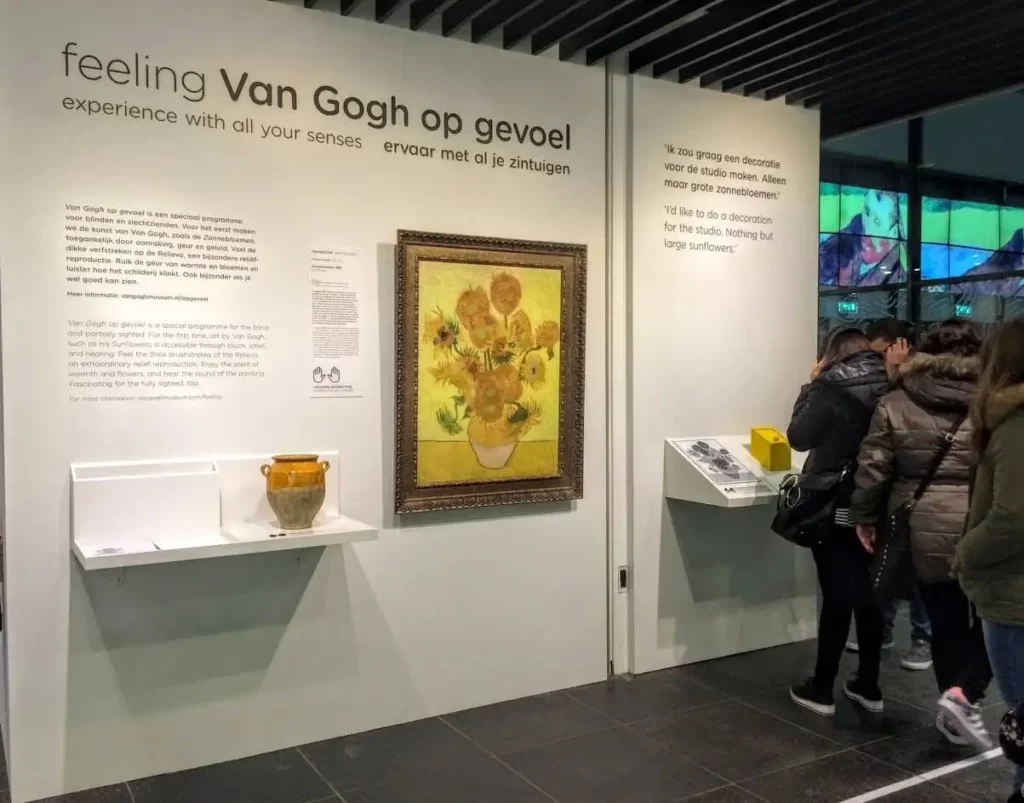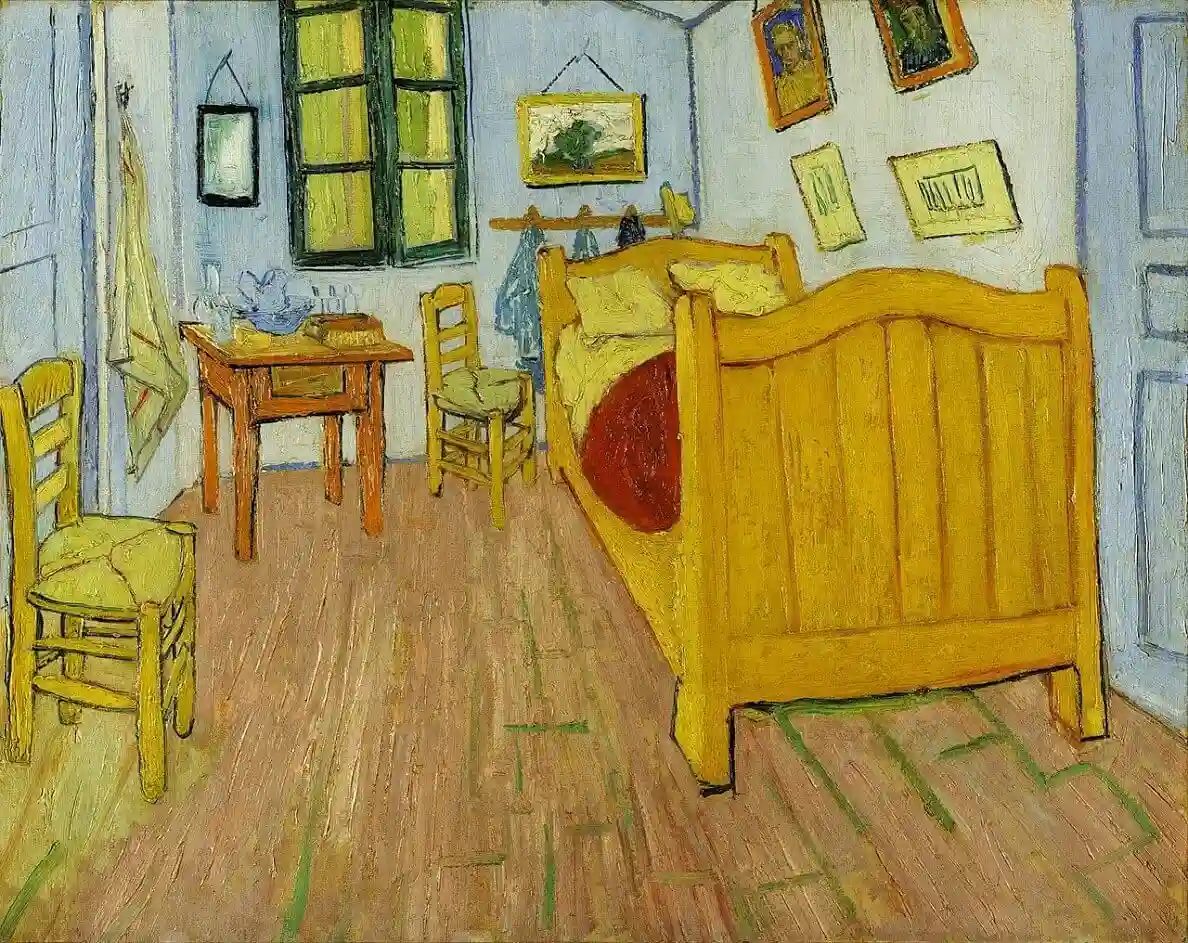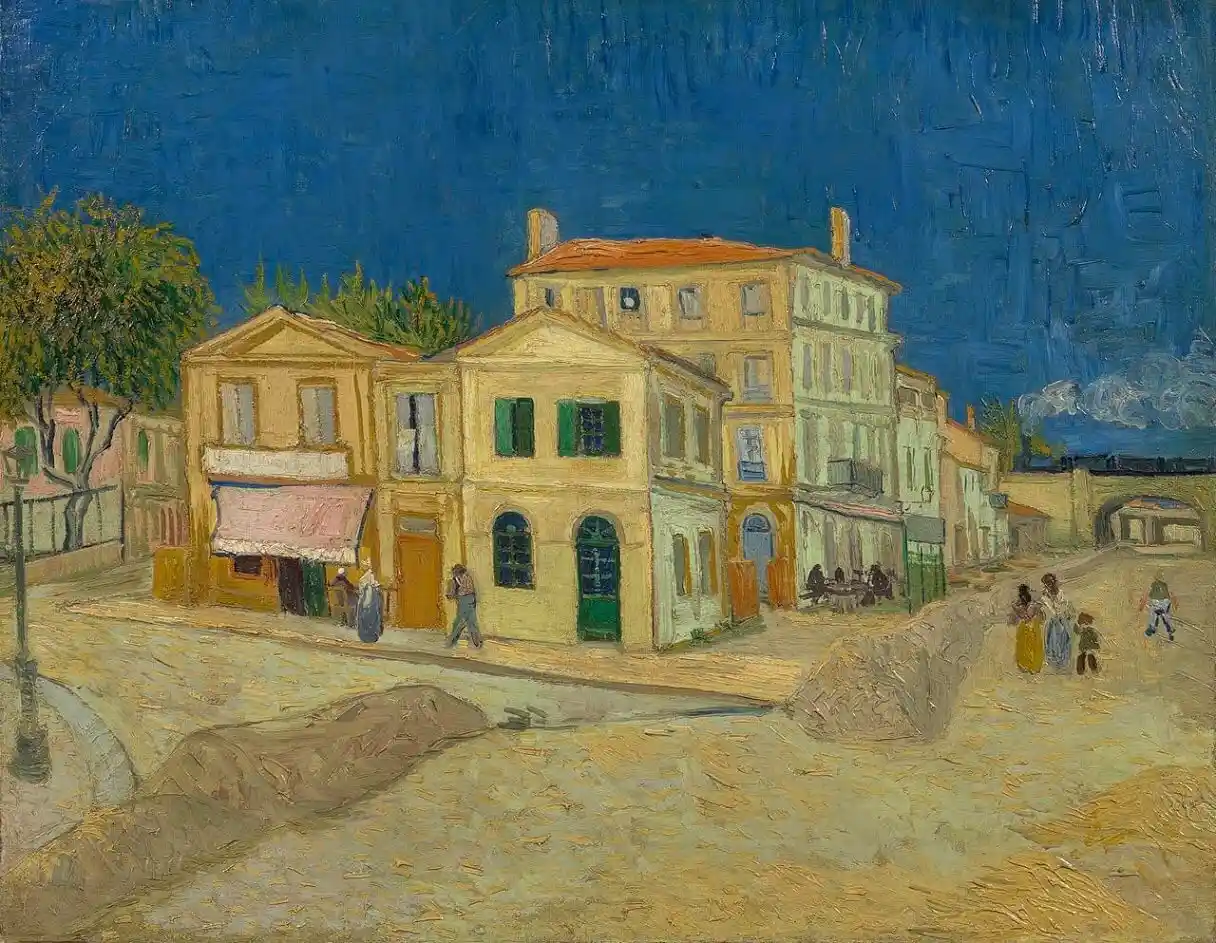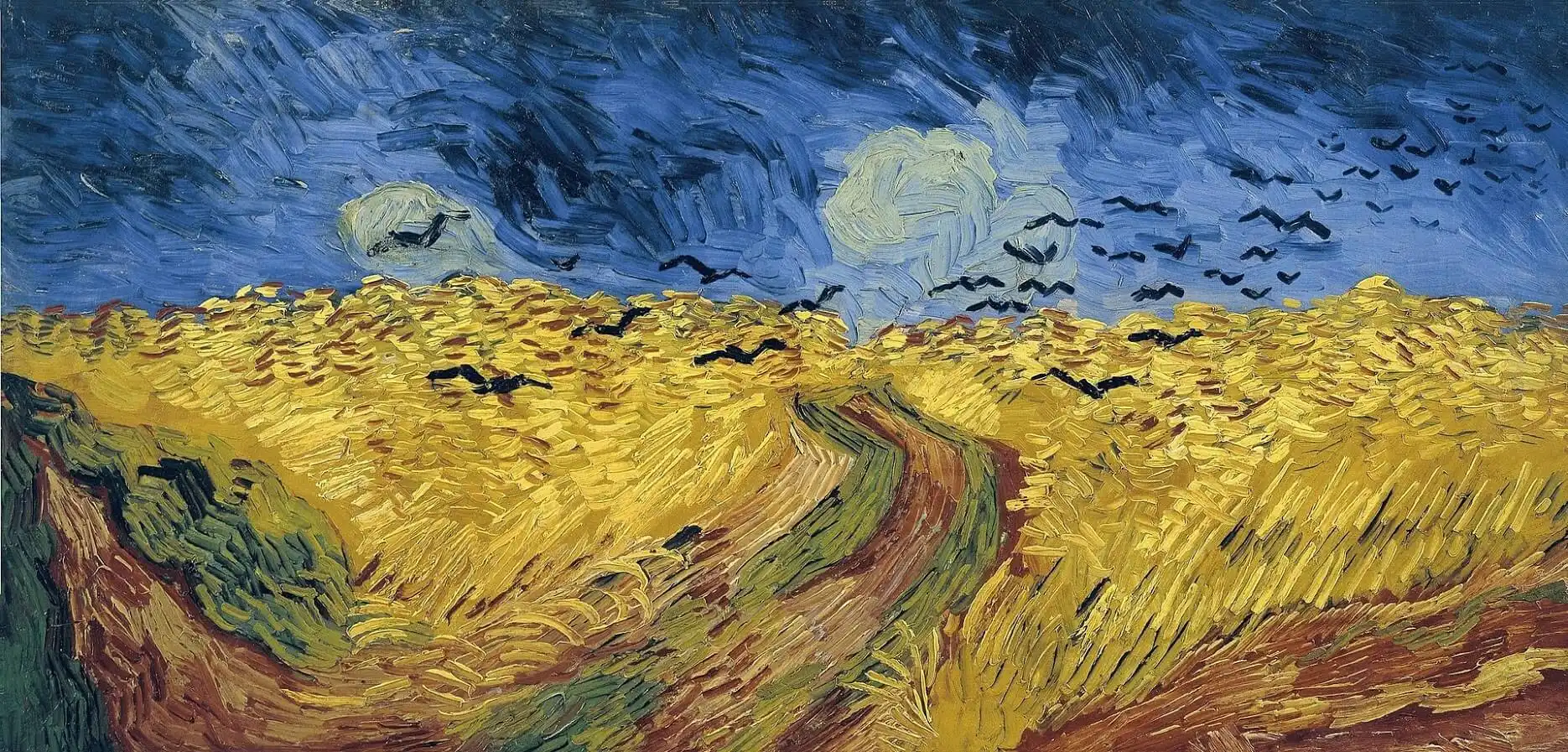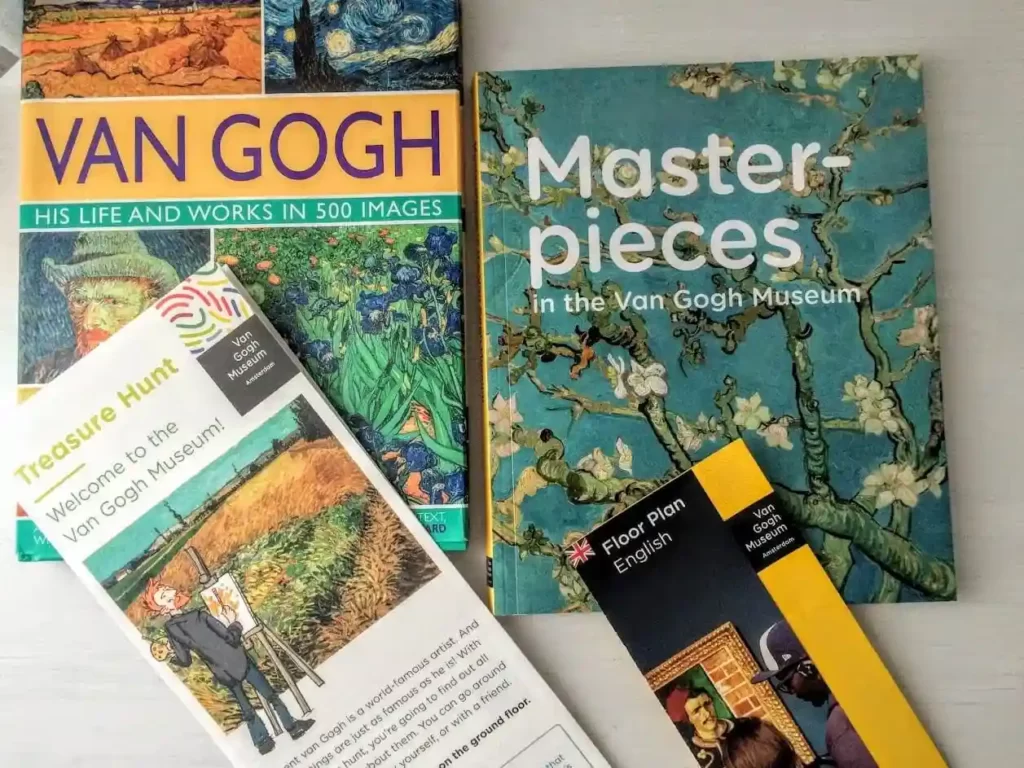Van Gogh Museum Highlights & Tips for Visiting blog post was first published on Culture Tourist on 3 July 2020 and updated on 29 March 2024.
The Van Gogh Museum is one of the best museums in Europe, and often the only reason people visit Amsterdam. But with more than two million visitors each year, it’s wise to prepare for your visit to the Van Gogh Museum in Amsterdam well. Keep reading to learn about the Van Gogh Museum highlights and tips for visiting that fantastic museum.
Van Gogh Museum in Amsterdam
This post contains some affiliate links. Read our Privacy Policy for more info.
If you’re wondering about the Van Gogh Museum highlights not to miss and things to know before your visit, no worries, you’re at the right place. This fantastic museum is home to some of the most famous paintings created by Vincent van Gogh. And it’s also a place where you can learn a lot about his life, family and him as a person.
I used to guide museum tours at the Van Gogh Museum for three years, so I know it well. Keep reading for my best tips for visiting the Van Gogh Museum in Amsterdam.
Van Gogh Museum History
Van Gogh Museum was opened in 1973. It was designed by a famous Dutch architect, furniture designer, and a member of the De Stijl movement, Gerrit Rietveld. The new entrance and temporary exhibition wing were created later on by Japanese architect Kisho Kurokawa.
The museum has the most extensive collection of Van Gogh’s paintings worldwide. Interestingly, the second largest art collection of Van Gogh’s artworks is also located in the Netherlands, at the Kröller-Müller Museum. So the biggest fans of his work should plan a visit to both of these museums.
After Vincent van Gogh died in 1890, his younger brother and one of his closest friends, Theo van Gogh, inherited his paintings. However, Theo died six months later, so his widow, Johanna van Gogh-Bonger, took care of the artwork.
She started organising exhibitions of his paintings, writing about him in art magazines and selling his artworks. In the 1920s, she realised it was good to have his collection together and stopped selling his artwork. Some 200 paintings and most of his drawings (around 1,000) that remained in the family collection are displayed in the Van Gogh Museum today.
They were first displayed in a neighbouring Stedelijk Museum. After the new museum was built in 1973, they were moved to their new permanent home on the Museumplein in Amsterdam.
⤷ Read more: The best museums in Amsterdam
Van Gogh’s Artworks
Although Van Gogh is one of the most famous and beloved modern painters today, his painting career was rather short. He started painting when he was 27 and died only ten years later.
However, during that time (1880-1890), he created more than two thousand paintings and drawings. Sadly, during his life, he sold only one picture.
Over his ten-year-long painting career, Vincent van Gogh lived in three different countries, and his artistic style changed a lot. His early paintings, created while he was living in the Netherlands, are dark, showing peasants and their difficult life as the central motif. When Van Gogh arrived in Paris, he was introduced to modern art and started experimenting with painting styles, from Impressionism to Pointillism.
In 1888, he travelled to the south of France, to Arles, where he developed his unique, recognisable style. However, this was also where his mental illness started to appear. And it will become visible in the paintings he created during the last two years of his life.
⤷ Read more: Art History Lesson – Vincent van Gogh
Van Gogh Museum Highlights
Van Gogh Museum in Amsterdam is one of my favourite museums and a great place to learn about the life and work of this fascinating artist. Not only can you see most of his paintings there, but also because they are displayed chronologically. So you can see the development of his art well and easily follow how quickly he changed throughout those ten years.
The ground floor of the Van Gogh Museum
Please note that the Van Gogh Museum has been reconstructing some of its galleries lately. That’s why some paintings may not be in the rooms where they usually are. However, they are displayed similarly to how they typically are. So, you can keep using this guide to the Van Gogh Museum highlights.
Van Gogh’s self-portraits
Although we have only one photo of Vincent van Gogh, we know very well what he looked like from his self-portraits. Vincent painted around 35 self-portraits, many displayed on the ground floor of the Van Gogh Museum in Amsterdam. Most of them aren’t finished because they were only a way to practice for him. So his plan wasn’t to sell any of them.
⤷ TIP: When at the Van Gogh Museum, look at the back of some self-portraits displayed in the glass windows. Vincent always lacked money, so he often reused his older paintings and created new artworks on their background. That’s also showing you that self-portraits were only a practice for him, and he didn’t plan to sell them.
Sunflowers reproduction
I hear you asking why to see the copy when there is an original ‘Sunflowers’ at the Van Gogh Museum in Amsterdam? Well, because this is quite an exceptional reproduction. It’s the only painting at the museum you can touch and smell.
Vincent often used thick paint when working on his artworks, and that’s especially visible in the ‘Sunflowers’. This reproduction was created for people with vision impairment, but it’s also a great way to experience his art through different senses.
The first floor of the Van Gogh Museum
The Potato Eaters
‘The Potato Eaters’ is, without a doubt, one of the Van Gogh Museum highlights. In the first room on this floor, you’ll find Van Gogh’s paintings from the first five years of his career. They were made while he lived in the Netherlands. The way he used light and captured the emotion of the peasants’ harsh life, makes ‘The Potato Eaters’ his first masterpiece.
⤷ Read more: Locations linked to Van Gogh in the Netherlands
Bedroom in Arles
Van Gogh developed his own unique and recognisable art style when he moved to the south of France. ‘Bedroom in Arles’ is one of his paintings on which you can see the colour experiments typical for him during that time. By playing with contrasts and using bold outlines, this painting inspired generations of expressionist painters after him.
Van Gogh often created multiple versions of the same painting. That’s why you can see two other versions of this painting at the Musée d’Orsay in Paris and the Art Institute of Chicago. We also have three versions of his ‘The Potato Eaters’ and multiple versions of some of his other paintings.
Sunflowers
This is how Van Gogh described his ‘Sunflowers’ in a letter to his friend painter, Emile Bernard, in August 1888.
I’m thinking of decorating my studio with half a dozen paintings of Sunflowers. A decoration in which harsh or broken yellows will burst against various blue backgrounds, from the palest Veronese to royal blue, framed with thin laths painted in orange lead. Sorts of effects of stained-glass windows of a Gothic church. Ah, my dear pals, we crazy ones, let’s anyway enjoy with our eyes, shall we?
Vincent van Gogh painted seven different versions of this famous painting. And you’ll find one of them among the Van Gogh Museum highlights. Bright and joyful, painted almost with only one colour – yellow, it marks the peak of his art career. By contrasting fresh, bright yellow flowers with the older ones, practically gone to seed, Vincent included the symbolism of the life circle in this painting in a beautiful way.
⤷ Read more: Van Gogh and his Sunflowers
The second floor of the Van Gogh Museum
Van Gogh’s letters
If he hadn’t been celebrated as one of the most fascinating painters in the world today, Van Gogh would have been known as a great poet. Vincent wrote numerous letters to his brother Theo and others, especially artist friends. He also described and included small drawings of paintings he was working on in them. You can read or listen to his letters on the museum’s second floor. They tell so much about him and his gentle personality. Be sure to dedicate some time to exploring his letters during your visit to the Van Gogh Museum.
Vincent’s painting material
You can also learn so much about the way Vincent painted and worked at the Van Gogh Museum. A part of the museum is dedicated to that aspect of his art. On the museum’s second floor, you’ll learn about Van Gogh’s painting materials and technique – from the pigments he used and how he experimented with colours to the tools he created himself, such as the perspective frame.
The Yellow House
Probably one of the most famous artist residencies, the Yellow House is where Vincent van Gogh lived in Arles. It’s also where he wanted to found his own art colony. And where Paul Gauguin lived with him for some time. A famous painting, the ‘Yellow House’, is located on the second floor of the Van Gogh Museum.
⤷ Read more: Locations linked to Van Gogh in Arles
The third floor of the Van Gogh Museum
Almond Blossom
Although mental illness become more visible in the paintings towards the end of his life, his painting, the ‘Almond Blossom’, stands out with its tranquillity and beautiful symbolism. Vincent painted it for his little nephew, and the symbolism of the new life could be recognised all over it. The almond tree is among the first to blossom in spring, thus symbolising birth and new life. Originally, flowers were pink, but the colour faded over time. However, an original colour combination of light blue and pink symbolises a baby.
Irises
Van Gogh loved painting flowers; besides the sunflowers, irises were one of his favourite motives. When visiting the Van Gogh Museum, you shouldn’t miss this large composition of irises in a vase on a yellow background. Once again, we can see the symbolism of a life circle, with some flowers slowly withering on the right-hand side of the painting.
⤷ Read more: Locations linked to Van Gogh in Saint-Rémy-de-Provence
Wheatfield with Crows
Although not his last painting, this one really symbolises the end of Vincent’s life. He painted the vast wheat field above Auvers-sur-Oise, where he used to paint over the previous two months of his life. Above it is the dark sky with black crows flying to it. Three paths are leading in the field, almost as showing different life paths. Knowing he died only a few days after creating this painting makes us wonder if Van Gogh predicted his death in it.
⤷ Read more: Van Gogh in Auvers-sur-Oise
How much time should you spend in the Van Gogh Museum?
Two hours should be enough to see all the highlights at the Van Gogh Museum in Amsterdam. It has four floors, and although they are not too large, you’ll need some time to walk around.
However, if you’d like to explore it at a slower pace and visit a temporary exhibition, too, you should reserve around three hours for your visit.
⤷ TIP: Van Gogh Museum is wheelchair-friendly. It has a large elevator, and you can get around the museum without a problem.
Is Starry Night at the Van Gogh Museum in Amsterdam?
No, ‘Starry Night’ isn’t at the Van Gogh Museum in Amsterdam. It’s in the Museum of Modern Art (MoMA) in New York.
Van Gogh Museum tickets
You can only visit the Van Gogh Museum with a pre-bought ticket with a dedicated starting time. It’s a busy place, and to control the crowds, the museum only lets a certain number of people in simultaneously. You can buy your Van Gogh Museum online ticket using this link.
⤷ TIP: The Van Gogh Museum is not included in the I amsterdam City Card. If you have it and want to visit this museum, you must purchase your online ticket using the link above. Read my article to find out is the I amsterdam City Card worth it on this link.
Tips for visiting the Van Gogh Museum
Together with the neighbouring Rijksmuseum, the Van Gogh Museum is one of the busiest museums in Amsterdam. That’s why it’s good to prepare well for your trip. Here are some of my tips for visiting the Van Gogh Museum.
- Best time to visit the Van Gogh Museum – With more than two million visitors per year, it could get really busy inside the Van Gogh Museum. The best time to visit is early morning. My advice is to be there at 9 am. If you’re not a morning person, a bit later in the afternoon, around 4 pm, could also be a great time to visit the Van Gogh Museum.
- It’s allowed to take photos in a museum now – For years, it wasn’t allowed to take pictures inside the museum. However, now it’s allowed. Still, take them without using flash and disturbing other visitors.
- Take a guided tour –I used to work as a guide at the Van Gogh Museum and can tell you from my experience that your visit will be so much better with a guided tour. This is the semi-private Van Gogh Museum tour organised by the company I worked with. They have excellent guides, and I definitely recommend it.
- Have a break at the museum cafe – Van Gogh Museum has a lovely cafe, Le Tambourin, where you can have a cup of coffee, a glass of wine or a quick bite. It also has a beautiful view of Museumplein, and I recommend you take a break there while exploring the Van Gogh Museum highlights.
- Visit the bookshop on the top floor – If you’d like to read Van Gogh’s letters or buy his biography, visit a bookshop on the top floor of the Van Gogh Museum. It has a great selection of art books, works about Van Gogh and some children’s books about painters and art. I’ll definitely add it to your list of what to see at the Van Gogh Museum in Amsterdam.
Van Gogh Museum is among the best museums in the world. This guide through the Van Gogh Museum highlights and its tips for visiting Van Gogh Museum will make your visit more enjoyable.
Discover more fantastic Amsterdam museums:
- Frans Hals Exhibition at the Rijksmuseum: Review, highlights & tips for visiting
- The Rembrandt House Museum in Amsterdam
- 10 Things you didn’t know about the Rijksmuseum
- Moco Museum: Highlights & A virtual tour
- Virtual Museum Visit: Still lifes at the Rijksmuseum
- Rijksmuseum with kids: One hour long self-guided tour with a toddler
- Virtual Museum Visit: Johannes Vermeer at the Rijksmuseum
Cover photo by Frans Ruiter on Unsplash / Homepage slider photo by Ståle Grut on Unsplash

